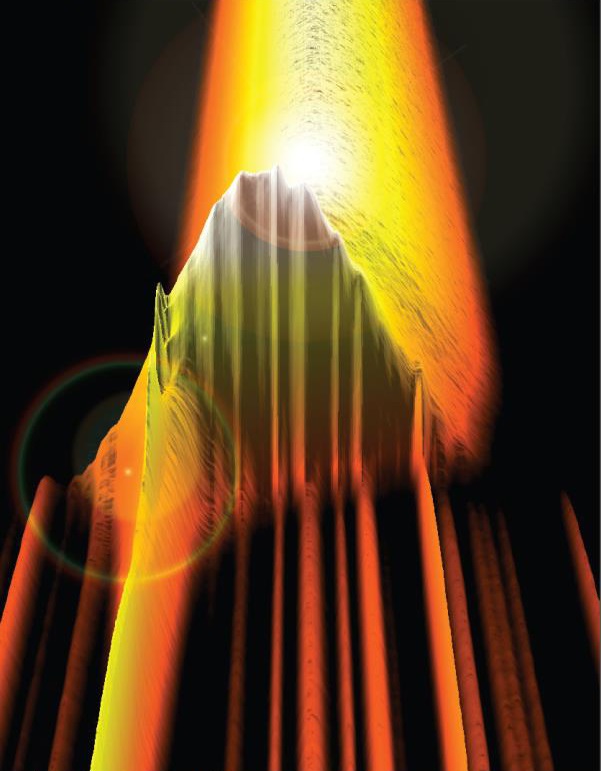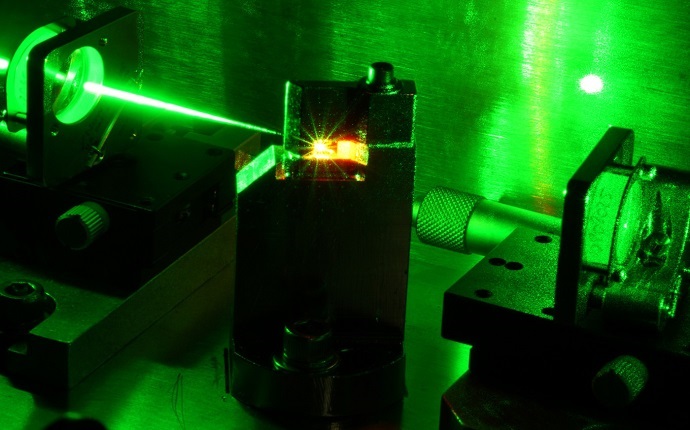15.03.2016
Extremely short, intense optical signals are essential in basic research, manufacturing, and ophthalmology. Emitted from a special breed of lasers, these ultrashort flashes of light are fundamentally different from the output of a conventional, monochromatic laser. This flashed emission consists of a broadband spectrum – a rainbow – and the shorter the pulse, the more colors it contains. A collaborative research effort at the University of Göttingen and the University of California, Los Angeles (UCLA) has now observed the emergence of these ultrashort laser pulses in real time, with a frame rate of 90 million snapshots per second.
The emission of a stable, pulsed laser is characterized by a periodic chain of light flashes. However, the start of this operation is irregular, developing from a tangle of random fluctuations. The fluctuations compete over many thousands of roundtrips as they reflect back and forth between the laser’s internal mirrors. This nuanced competition makes the startup of the laser highly complex, with each transition to the steady state unique. In the quest to advance laser technology, Georg Herink and Claus Ropers (Göttingen University) together with Daniel Solli and Bahram Jalali (UCLA) have harnessed the fastest type of spectrometer available to examine this process. This unique spectral measurement technique exposes the colors of each individual pulse despite the extreme conditions of the application. It is able to record the spectra of hundreds of thousands of consecutive pulses, each separated by mere billionths of a second. The technique makes use of the principle of chromatic dispersion: in a glass fiber, every color travels at a different speed, and so an ultrashort pulse spreads out as it travels. With a kilometer-long fiber, the colors of each pulse are separated in time, creating a signal that can be captured with special high-speed electronics. Using this technique, the scientists were able to observe the complete formation of the rainbow spectrum each time the laser was activated.

Real-time measurement of the start of an ultrashort pulse laser: at the transition from fluctuating (below) to stable operation (above), one out of the many fluctuations grows sharply. The spectral broadening is visible in the temporal signal and finally forms a chain of ultrashort pulses with constant broadband spectrum, a stable rainbow. Illustration: Georg Herink, University of Göttingen
"Real-time spectroscopy fills a gap in laser diagnostics. We get unique insights into laser systems and short-lived nonlinear effects in a split second," explained Dr. Herink. For example, the researchers found a previously unknown mechanism in which an interplay between two transient light fluctuations facilitates the creation of a stable rainbow. Moreover, the team observed that it is not necessarily the most intense fluctuation in the initial random tangle that develops into the stable rainbow: the complex dynamics can suddenly favor a weaker disturbance, ignoring stronger members that were seemingly the original favorites. The results, which may impact laser design and the study of nonlinear systems, will be published in the upcoming issue of the journal Nature Photonics.
Original publication: Georg Herink, Bahram Jalali, Claus Ropers, Daniel R. Solli, Resolving the build-up of femtosecond mode-locking with single-shot spectroscopy at 90 MHz frame rate. Nature Photonics (2016). Doi: 10.1038/nphoton.2016.38













